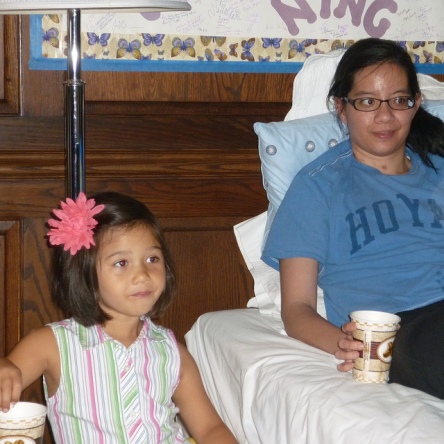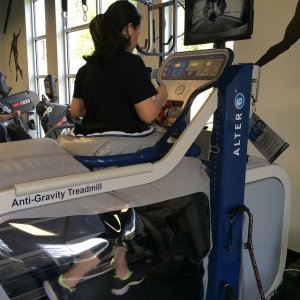

Before you enter the field you want to know who’s already there and if your product/service is good enough to hold its own. Do your homework! The internet makes it easy to get a good start – Google, Amazon, etc. will give you an overview. You should also go to some sites that people interested in your field congregate at and see what they’re talking about – e.g. is there a cool new product Moms are talking about on a popular Mommy blog? Are tufted fabric headboards popular now, or do people like wooden ones? How do men carry things when they travel without carrying a purse? If the messenger bag is a popular solution, what kinds of options are already in the market?
If your offering is a product you could also go to the store and just look at what’s already on the shelves at local big box retailers. Would yours be a compelling option to a consumer pushing a cart down that aisle? (We’re suspending reality a moment and pretending you’re so amazingly fortunate as to have your product in a hard-to-break into distribution channel; seriously, though – if you can’t imagine your product being a fantastic option on that shelf you’ll have nothing to say to the stores’ merchandise buyers, so definitely ask yourself this question.
If your offering is a service make sure you know who your competitors are and why you can do the job better than they can. There could be some debate on this point, but you probably don’t want to alienate your competitors by saying things like, “You are awful at what you do,” or telling prospective customers that everyone else is amazingly incompetent because it’s possible you could need their help in the future, or a collaboration might be in order on a project one day. So play nice, but position yourself well so you can play hard. You’re playing for keeps here – this is your livelihood we’re talking about, and you could have a family of people depending on you.
An easy way to visualize the playing field and your position on it is to draw a picture. I think a concept exists for illustrating several attributes at once (a “spider chart”), but this is too intricate for me to dive into now. For ease of use and clarity of thought, let’s look at a simple attribute chart. Pick 2 attributes that are important and draw an x-y axis with negative space so you have quadrants.
To illustrate – let me refresh your memory on Parking 101. This is not strictly an attribute map of a “playing field,” but I just want to show you what I mean by “negative space” and “quadrants” – sorry, I don’t know how to describe it.


Now put points on your attribute map representing the key players on the field and add one for yourself. Are you alone? Are people nearby? Be able to explain why the attributes you’ve chosen are important, why it’s a good thing that you’re positioned where you are and why the proximity of your competitors is near or far.
Now it’s time for me to self-illustrate with Learning How... I’m not going to use the names of any other books because I don’t want to pick on anyone and my visual issues have prevented me from doing the thorough reading/research you should do if you’re able – I’ve just skimmed the back of the books and tried to gather the information I could. So here are my attributes:
I’m defining the field as the near-death/inspirational narrative book genre, and the two attributes I’m dealing with today are:

1) Readability: Quality of the text is important because Learning How… is a book – people will experience it through reading. There is a lot of good writing out there and a lot of bad writing. Few people who have a real-life story they want to tell are equipped to write it themselves – many people often use a ghostwriter to help them tell their story since this action will result in a better quality product. Good move, I think – it is a better decision to work with a professional who has a demonstrable command of the English language than to go it on your own and make your reader suffer through ill-thought out text. Many people with a story to tell have amazing skills they have cultivated instead of writing, so it makes sense that they would enlist some professional help when the time came to write a book.
Have you ever read bad writing? I have. It’s like scraping fingernails on a chalkboard. You are bound to come up against it at work or school – the painfulness of these experiences are proof enough that you do not want to make your reader suffer.
Now I’m going to toot my own horn a bit for the purposes of this illustration: I know how to write. A bunch of MCPS Teachers and Professors at Georgetown (COL ’02) made sure of this and I hope that whatever I produce will be a credit to them in terms of the quality of writing. My writing “voice” is what it sounds like if we were speaking face to face, at least that’s what I’m going for – this, plus occasional brain lapses that may or may not be related to the injury are my excuses for my grammatical errors and colloquialisms. I told you I’d learn the grammar on Youtube on Monday before teaching it at ESL on Tuesday. Overall, though, it’s a blessing that I can just talk/write and words come out because my impairments do not allow for a whole lot of revision. Or any revision, really – so I’ve been told that the chapters of my “Memoirs” are kind of like blog posts. I figure I’m okay with that since people have short attention spans and I can’t really weave together a cool structure at this point. It is what it is. And there’s also the problem of me being asleep for the first few chapters, so they’re necessarily short. I have, however, addressed this issue by adding in some real-time updates written by Tanpo and Boo Boo (my sister, Ai Ai).
So there’s no ghostwriter here, and (I hope) no bad writing. You’re getting this from the horse’s mouth. (Not Ed, but me…it’s just an expression.) There is no middleman – the thoughts are 100% raw from me to you.
2) Palatability
By “palatability” I mean to what extent does a book appeal to general tastes. The inspirational genre I’ve parked myself in often smiles on uplifting stories that make you feel good by illustrating the triumph of the human spirit.
I’m conflicted over this one. In a way, Learning How… is extremely unpalatable – I mean how instead of sending me to the mission field God put me in a wheelchair. (I usually do not verbalize this part of my medical history to providers since it’s rather a downer.) But on the upside, being unpalatable puts Learning How… in a quadrant with few if any competitors. This goes back to the “badness” concept. In a certain way, I’m depending on people’s instinctive desire to rubberneck to drum up some interest. So yeah – it looked really bad to me. Before I woke up I mouthed the word “Why” a lot and for a few days I was thrashing about in my bed, clearly extremely agitated and kicking my legs since that was the only thing I could do.
That’s when Timmy told Ai Ai he thought she should go out to OR to be with me and support our parents, and she flew to PDX, expecting me to still be closed-eyed and upset. But she was in for a SURPRISE! Because I woke up the day before her arrival and when she walked in to my room at Vibra (2nd hospital) I was in the middle of PT and was able to give her a hug. I was so loopy I thought I was dreaming so I just talked (very softly and laboriously) and laughed with her – business as usual!
So the part where I surprise my sister and we laugh like hyenas for 3 straight days is actually very palatable, but she had been steeling herself to be an emotional bolster for our family in a very unpalatable situation.
Upon reflection, my whole refusal to believe what happened is kind of sad (and unpalatable). People told Mommy that they were deeply touched when Daddy wrote that email saying I had asked Mommy in the garden if we were dealing in reality and not a dream, and she told me it was for real. In hindsight it is a little heartbreaking. I honestly didn’t know and asked Mommy to tell me the truth. I only half believed her, though – I decided later that if we were all in my dream of course she’d say this was reality.
So why read Learning How…? Not to torture yourself because it’s like a wreck you can’t look away from. Yes, this is one of those cases in which truth is stranger than fiction – but this really happened (wanna see Tanpo’s video montages?) and I’m just recording the events that unfolded. So you’re in for the voyeurism/entertainment value occasioned by the severity of my illness and my refusal to believe what happened once I woke up and entered the Rehabilitation Process (and might have given a lot of people a (mildly) hard time). Let me say again, this is not a feel-good story about the triumph of the human spirit. It’s about how God took away my old life, eliminated the possibility of giving me the life I wanted, and how He gave me a heart transplant so I can look to the future with hope, not because of some promise of future good He communicated to me supernaturally before I woke up, but based on all of the publicly-available information I knew about in my old life and that was motivating me to go to Africa.
Pfewf – that was a long sentence, but I had to get that off my chest. A few paragraphs ago I said I was “conflicted” over the attribute of “palatability.” I’ve tried to explain above that Learning How… is, in a way, extremely unpalatable in that if you just look at what happened before Decision Day (when God answered all my questions on July 24, 2011), you’d have the script for a movie about why NOT to trust Him. But if you follow the story a little longer you’ll understand why I think He was saying I did not forget you. I did this on purpose. You can trust Me.
Still, the story is kind of…extreme. I mean, if people read inspirational fare they want to feel good so they have more energy to face daily life– how will they relate to such a downer and such a statistically unlikely event? I’ll go into this more in a later post re. “Who are your customers?” but let me tell you why I’m taking this very unpalatable experience and saying it’s relatable: All the skills that help me cope in RecoveryLand I used daily to cope with school, work etc. in my old life. There is no new knowledge here, nor was any “special” knowledge communicated to me in the Valley of the Shadow. More to come!!
PS. If you’re wondering when Learning How… will be publicly available, I’m aiming for Thanksgiving…(but that’s what I said last year, too)…I move kind of slowly now, but I’m trying, I really am. xoxo
Part 1: What is your elevator pitch?


Quote from yesterday: How are your neurotransmitters? Seriously, D – I am so embarrassed for you right now. Who asks that sort of thing? I don’t even know what that means.
































